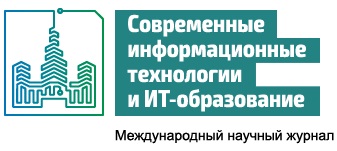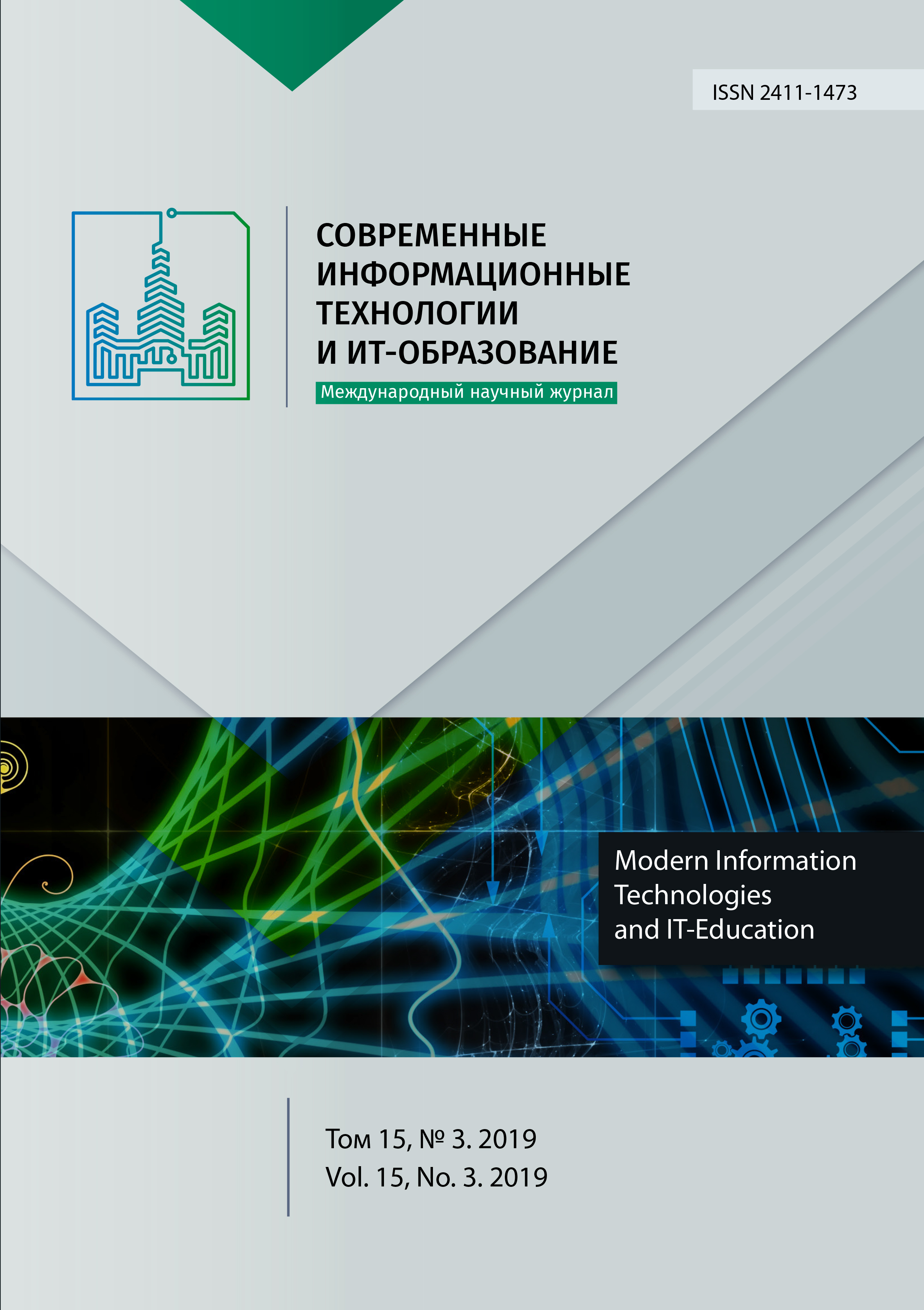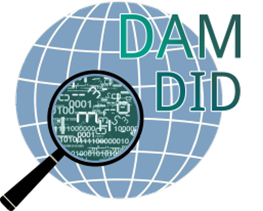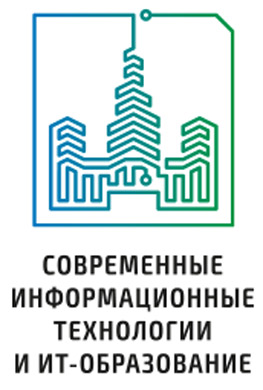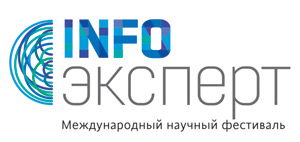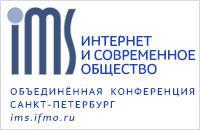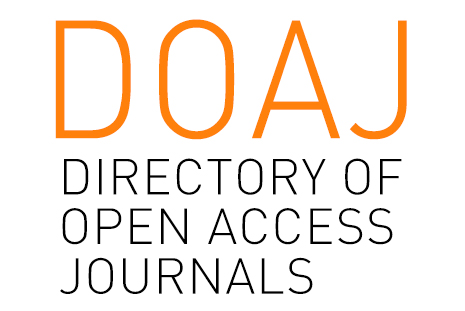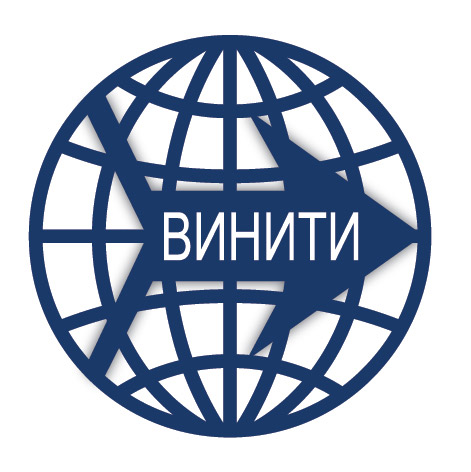Система сбора и анализа данных для решения управленческих задач с использованием компьютерных игр (на примере симулятора GT-R:Space)
Аннотация
Один из постулатов цифровой экономики состоит в ценности данных и важности их интерпретации. Разнообразие источников сбора данных обеспечивает комплексность взгляда на объект и его поведение, однако также создает барьеры при создании моделей, совмещающих разные типы данных для целей анализа. Развитию таких сложных моделей способствует развитие конвергентных инфраструктур. Для целей исследования был выбран пример конвергентной инфраструктуры - симулятор, с помощью которого были смоделированы условия для реального взаимодействия людей в команде и собраны данные из разных источников для создания ее цифрового профиля.
В ходе исследования был проведен эксперимент, направленный на изучение границ использования разных источников данных о командном взаимодействии в игровой ситуации с помощью симулятора: игровая миссия по защите общего объекта - космического корабля, пульсометры для сбора биометрических данных, видео- и аудиопотоки о поведении игроков во время прохождении миссии. В статье подробно описывается подход к организации эксперимента, методов, критериев оценки и полученные результаты (всего в эксперименте приняло участие свыше 750 человек).
Данные, собранные из указанных источников, использовались для оценки командного взаимодействия и формирования цифрового командного профиля по трем агрегированным показателям: командная эффективность в игре (итоговый игровой результат), командное взаимодействие («плотность» взаимодействия игроков), командная готовность к изменениям (оценка стрессоустойчивости и проактивности).
По результатам эксперимента были сформулированы ограничения и дальнейшие направления развития исследования командного взаимодействия с использованием игровых тренажеров и систем анализа данных, собираемых в процессе их игрового взаимодействия.
Литература
[2] Park H.-R., Kim C.-J., Park J.-W., Park E. Effects of team-based learning on perceived teamwork and academic performance in a health assessment subject. Collegian. 2015; 22(3):299-305. (In Eng.) DOI: 10.1016/j.colegn.2014.05.001
[3] March P.L. Playing with clay and the uncertainty of agency. A Material Engagement Theory perspective. Phenomenology and the Cognitive Sciences. 2019; 18(1):133-151. (In Eng.) DOI: 10.1007/s11097-017-9552-9
[4] Madani K., Pierce T.W., Mirchi A. Serious games on environmental management. Sustainable Cities and Society. 2017; 29:1-11. (In Eng.) DOI: 10.1016/j.scs.2016.11.007
[5] Wong A.H., Wing L., Weiss B., Gang M. Coordinating a Team Response to Behavioral Emergencies in the Emergency Department: A Simulation-Enhanced Interprofessional Curriculum. Western Journal of Emergency Medicine: Integrating Emergency Care with Population Health. 2015; 16(6):859-865. (In Eng.) DOI: 10.5811/westjem.2015.8.26220
[6] Browning C., Farhang A., Saljoghei A., Marchetti N., Vujicic V., Doyle L.E., Barry L.P. Converged wired and wireless services in next generation optical access networks. In: 2017 19th International Conference on Transparent Optical Networks (ICTON), Girona, 2017, pp. 1-3. (In Eng.) DOI: 10.1109/ICTON.2017.8025032
[7] King D., Ritchie S., Sandhu M., Henderson S. Emotionally Intense Science Activities. International Journal of Science Education. 2015; 37(12):1886-1914. (In Eng.) DOI: 10.1080/09500693.2015.1055850
[8] Bolodurina I., Parfenov D. Development and Research of Models of Organization Distributed Cloud Computing Based on the Software-defined Infrastructure. Procedia Computer Science. 2017; 103:569-576. (In Eng.) DOI: 10.1016/j.procs.2017.01.064
[9] Gilfoyle E., Koot D. A., Annear J. C., Bhanji F., Cheng A., Duff J.P., Grant V., George-Hyslop C. St., Delaloye N., Kotsakis A., McCoy C., Ramsay C., Weiss M., Gottesman R. Improved Clinical Performance and Teamwork of Pediatric Interprofessional Resuscitation Teams With a Simulation-Based Educational Intervention. Pediatric Critical Care Medicine. 2017; 18(2):e62-e69. (In Eng.) DOI: 10.1097/pcc.0000000000001025
[10] Erol B., Gurbuz S.Z. A kinect-based human micro-doppler simulator. IEEE Aerospace and Electronic Systems Magazine. 2015; 30(5):6-17. (In Eng.) DOI: 10.1109/MAES.2015.7119820
[11] Ko B.C. Brief Review of Facial Emotion Recognition Based on Visual Information. Sensors. 2018; 18(2):401. (In Eng.) DOI: 10.3390/s18020401
[12] Deshmukh S., Patwardhan M., Mahajan A. Survey on real-time facial expression recognition techniques. IET Biometrics. 2016; 5(3):155-163. (In Eng.) DOI: 10.1049/iet-bmt.2014.0104
[13] Cordaro D.T., Sun R., Keltner D., Kamble S., Huddar N., McNeil G. Universals and cultural variations in 22 emotional expressions across five cultures. Emotion. 2018; 18(1):75-93. (In Eng.) DOI: 10.1037/emo0000302
[14] Akhtar Z., Falk T.H. Audio-Visual Multimedia Quality Assessment: A Comprehensive Survey. IEEE Access. 2017; 5:21090-21117. (In Eng.) DOI: 10.1109/access.2017.2750918
[15] Artamonov I.M., Artamonova Y.N., Efitorov A.O., Shirokiy V.R. Development of technology for recognition and monitoring of attention states based on neural networks. In: Proceedings of the XVII Russian Scientific Conference "Neurocomputers and their Application", MGPPU, Moscow, 2019, pp. 471. Available at: https://elibrary.ru/item.asp?id=41208295 (accessed 02.07.2019). (In Russ.)
[16] Artamonov I.M., Artamonova Y.N., Prozorov A.A. Problems of analysis of emotional states based on big data in connection with geolocation. In: Alekseev A.Y., Dubrovsky D.I., Kuznetsov V.G. (eds.) Actual issues of neurophilosophy – 2015. Yearbook. Materials of the international interdisciplinary seminar "Neurophilosophy", IIntell, Moscow, 2016, pp. 232-240. (In Russ.)
[17] Ekman P. Emotions Revealed: Recognizing Faces and Feelings to Improve Communication and Emotional Life. New York: Times Books, 1st edition, 2003. (In Eng.)
[18] Matz S.C., Kosinski M., Nave G., Stillwell D. J. Psychological targeting as an effective approach to digital mass persuasion. In: Proceedings of the National Academy of Sciences. 2017; 114(48):12714-12719. (In Eng.) DOI: 10.1073/pnas.1710966114
[19] Zilov V.G., Khadartsev A.A., Eskov V.V., Eskov V.M. Experimental Study of Statistical Stability of Cardiointerval Samples. Bulletin of Experimental Biology and Medicine. 2017; 164(2):115-117. (In Eng.) DOI: 10.1007/s10517-017-3937-1
[20] Müller B.C., Reise C., Seliger G. Gamification in Factory Management Education – A Case Study with Lego Mindstorms. Procedia CIRP. 2015; 26:121-126. (In Eng.) DOI: 10.1016/j.procir.2014.07.056
[21] Fidalgo-Blanco A., Sein-Echaluce M.L., García-Peñalvo F.J., Conde M.Á. Using Learning Analytics to improve teamwork assessment. Computers in Human Behavior. 2015; 47:149-156. (In Eng.) DOI: 10.1016/j.chb.2014.11.050
[22] Aarons G.A., Ehrhart M.G., Farahnak L.R., Hurlburt M.S. Leadership and organizational change for implementation (LOCI): a randomized mixed method pilot study of a leadership and organization development intervention for evidence-based practice implementation. Implementation Science. 2015; 10:11. (In Eng.) DOI: 10.1186/s13012-014-0192-y
[23] Uusitalo L., Lehikoinen A., Helle I., Myrberg K. An overview of methods to evaluate uncertainty of deterministic models in decision support. Environmental Modelling & Software.2015; 63:24-31. (In Eng.) DOI: 10.1016/j.envsoft.2014.09.017
[24] Lizar A.A., Mangundjaya W.L., Rachmawan A. The Role of Psychological Capital and Psychological Empowerment on Individual Readiness for Change. The Journal of Developing Areas. 2015; 49(5):343-352. (In Eng.) DOI: 10.1353/jda.2015.0063
[25] Khalili N.R., Duecker S., Ashton W., Chavez F. From cleaner production to sustainable development: the role of academia. Journal of Cleaner Production. 2015; 96:30-43. (In Eng.) DOI: 10.1016/j.jclepro.2014.01.099
[26] Leighton P. Professional self-employment, new power and the sharing economy: Some cautionary tales from Uber. Journal of Management & Organization. 2016; 22(06):859-874. (In Eng.) DOI: 10.1017/jmo.2016.30
[27] Nambisan S. Digital Entrepreneurship: Toward a Digital Technology Perspective of Entrepreneurship. Entrepreneurship Theory and Practice. 2017; 41(6):1029-1055. (In Eng.) DOI: 10.1111/etap.12254
[28] Vaitkevičius S., Čiutienė R., Meilienė E., Savanevičienė A. Typology of Human Capital Development in EU Countries. Procedia Economics and Finance. 2015; 23:1641-1648. (In Eng.) DOI: 10.1016/s2212-5671(15)00520-1
[29] Vogl T.S. Differential Fertility, Human Capital, and Development. The Review of Economic Studies. 2015; 83(1):365-401. (In Eng.) DOI: 10.1093/restud/rdv026

Это произведение доступно по лицензии Creative Commons «Attribution» («Атрибуция») 4.0 Всемирная.
Редакционная политика журнала основывается на традиционных этических принципах российской научной периодики и строится с учетом этических норм работы редакторов и издателей, закрепленных в Кодексе поведения и руководящих принципах наилучшей практики для редактора журнала (Code of Conduct and Best Practice Guidelines for Journal Editors) и Кодексе поведения для издателя журнала (Code of Conduct for Journal Publishers), разработанных Комитетом по публикационной этике - Committee on Publication Ethics (COPE). В процессе издательской деятельности редколлегия журнала руководствуется международными правилами охраны авторского права, нормами действующего законодательства РФ, международными издательскими стандартами и обязательной ссылке на первоисточник.
Журнал позволяет авторам сохранять авторское право без ограничений. Журнал позволяет авторам сохранить права на публикацию без ограничений.
Издательская политика в области авторского права и архивирования определяются «зеленым цветом» в базе данных SHERPA/RoMEO.
Все статьи распространяются на условиях лицензии Creative Commons «Attribution» («Атрибуция») 4.0 Всемирная, которая позволяет другим использовать, распространять, дополнять эту работу с обязательной ссылкой на оригинальную работу и публикацию в этом журналe.
